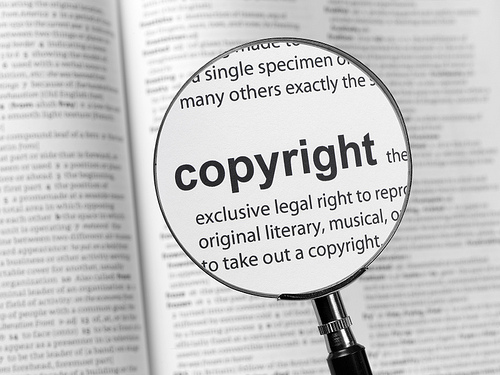Emerging Trends In Digital Copyright Law
Introduction
The growing technology and digitalization are, in a way giving rise to many privacy issues. One significant problem faced because of this is the need for copyright protection in the digital era. The advancement of technology poses a global threat to data security, and the growing intricacies of the latest technologies are a challenge to the existing copyright laws. Creative works, paintings, cinema, drawings, sculptors, computer programs, photography, etc., all come under the shelter of copyright laws of the nation. The Copyright Act has gone through many amendments to suit the new age of digitization. These laws aim to provide an incentive to the innovators or creators of miscellaneous copyright works, on the one hand, and make available these works to the public.
On the other hand, as the internet and technology reach increases, the threat of copyright and piracy also increases. The easy availability of enormous internet information, including books, paintings, computer programs, films, database, maps, artistic works, other literature, and any intellectual property, poses a significant concern of copyright infringement. The information available on the internet free of cost and without any barriers has made it difficult to determine whether the work is a counterfeit or pirated version of the original work. Various changes have made to make the statute more applicable and practical. However, it is not clear what protection is being given to any work produced initially. The impact of copyright is not limited to what mentioned below, but readers can find a brief insight of the same in this article. In this article, we will be discussing the copyright issues in India, the latest amendment Acts, and recent judgments.
Copyright issues in the digital world
Various issues come under the ambit of the copyright law of the land: –
- Copyright and database: Database mean a compilation of work, information, or arrangement of independent material. In India, databases have been interpreted as “literary works”. According to Section 2(o) of the Copyright Act, 1957, “literary works” include computer programs, tables, and compilation, including computer databases.
- Software: A computer software comprises many modules, computer programs, procedures, and documentation. Software piracy in India is categorized into five primary types:
- Counterfeiting: It refers to software that is made to look original and sold as such. Counterfeit software is complicated to identify and distinguish, i.e., the illegal copying and distribution of commercial software via downloads, CD, DVD, or any other form of digital formats.
- Internet Piracy: Online piracy is the act of downloading and distributing copyrighted material and Intellectual Property without paying for it.
- End-user piracy: This occurs when an individual or organization reproduces or uses unlicensed copies of the software for its operation.
- Client-server overuse: It occurs when too many people on a network use one central copy of the program simultaneously.
- Hard disk loading: It is commercial software piracy. Builders purchase a legal copy of the software then reproduce, copy, or install the software onto computer hard disks. Then a computer is sold with the hard disk containing the preinstalled software. This method of piracy is known as hard-disk loading.
- Social media: Social media has given a bounce to piracy and poses a threat to an individual’s security. Easy shareability of links, embedded information, copyrighted work has risen prominently.
Copyright (Amendment) Act, 2012
In the year 1998, the Indian Government passed the Digital Millennium Copyright Act 1998. The Act was framed to address updated technologies at present and be suitable for the growing realities of the digital era. After this, the whole world recognized the need for a Copyright Act. The massive amount of data circulated worldwide has been maintained digitally. All the confidential data has been uploaded on the internet that requires protection from any unauthorized access.
To comply with WIPO (World Intellectual Property Organization), India had amended India’s Copyright Act 1957, in May 2012. India amended the Act to abide by the “Internet treaties” of the organization i.e., WIPO Copyright Treaty (WCT), WIPO Performances and Phonograms Treaty (WPPT). The amendment was done to make six areas stronger:
- Cinematograph films, artistic works, and sound recordings to claim their rights.
- Compliance with WCT and WPPT.
- Author-friendly amendments on the mode of assignments and licenses.
- Provisions to facilitate access to works.
- Strengthening enforcement and safeguard against Internet piracy.
- Reformation of Copyright Board and many other minor amendments.
The amendment had substituted Section 53 of the Act with a new section providing measures to strengthen rights by making specific provisions to control the import of infringed work by the customs department.
A new Section 65A was introduced to protect TPM (Technological Protection Measures) exercised by the owner of a copyright of his work to safeguard his rights on the work. Any person who contravenes the law will be considered to have committed a criminal offence, and the same shall be punishable with imprisonment. Section 65B provides digital rights management information, which has been defined under clause (XA) of Section 2. Protection of rights management information and technological measures were introduced in (WCT) WIPO Copyright Treaty and (WPPT) WIPO Performances and Phonograms Treaty to prevent copyright infringement in the digital environment. Section 11 of the Act states for constituting a copyright board consisting of a chairperson and two members. A provision was also added to provide salaries and allowances to the members of the board. These changes, in a way, would help the Copyright Act to become effective legislation. To protect the original and artistic work internationally, the Berne Convention is taken into consideration.
Recent Judicial Pronouncements related to Copyright in Digital Era:
Sanjiv Pillai vs Venu Kunnapalli and Anr: The case is whether the author of work, even after work assignment, will have special rights of authorship on his work provided under Section 57 of the Copyright Act. The appellant is Sanjiv Pillai, a film director and scriptwriter. He met Venu Kunnapalli and associated with him for his project. Initially, Mr. Sanjiv was appointed as the director, but his services were terminated and replaced by someone else after some time. After the movie’s shooting, Mr. Sanjiv alleged that the film was being shot with a distorted, mutilated, and modifying script. The appellant filed an injunction application to restrain the release of the movie.
The Kerala High Court held that “Copyright is a form of intellectual property and here the appellant as the creator of the screenplay, script etc. has approached the District Court by filing the suit. What is enshrined in Section 57(1)(a) of the Copyright Act is that even if the Copyright has been assigned, the author of a work shall have the special right to claim the authorship of the work. Section 57 (1)(b) consists of two segments. The first part would entitle the author to restrain the opposite party from making any distortion, mutilation, or modification of any other act about the said work if it would be prejudicial to his honor or reputation. The second part says that the author is entitled to claim damages in respect of any distortion, mutilation or other modifications in the said work or any other action concerning the copyrighted work, which would be prejudicial to his honor or reputation.” Further, the Court was doubtless that the author of the work is the creator or originator of his literary art. However, it did not restrain the movie’s release, stating that in a film, joint efforts of people are involved if it is postponed, which will cause untold difficulties to all those persons who rendered their effort and service for making the film ready for release.
Yash Raj films vs Sri Sai Ganesh Productions: The appellant filed a copyright infringement against Sri Sai Ganesh Productions because it copied the movie ‘Band Baja Barat’ and produced it under the banner ‘Jabardasht‘. The YRF claimed that the character, plot, sketch, story, form, and expression were similar to his movie.
While considering this case, the Court held that the expression ‘to make the copy of the film’ under Section 14(d)(i) of the Copyright Act means creating a physical copy of the original film. It was to note that the film ‘Band Baja Barat’ is protected just like an original work. The Court conducted the originality test, taking reference from the case of R.G. Ananda vs Deluxe Films and Ors. (1978) 4 SCC 118. It held that the expression ‘to make a copy of the film’ in Section 14(d)(i) does not mean making a physical copy of the film by duplication.
Further, the Court emphasized the case of MRF limited vs Metro Tyres Limited CS(COMM) 753/2017 to make a distinction between the two films on the grounds of ‘substance foundation and kernel’ and to understand the point of view of an average Indian movie-goer as to whether these ordinary people would have an unmistakable impression that one work was the copy of other. Finally, the Delhi High Court held that the defendants had blatantly copied the plaintiff’s produced film’s fundamental and distinctive features.
Conclusion
Digitalization has given creators, innovators, and authors opportunities to showcase their work and make it available to the public to bring a social change, but infringing data breach and piracy is the most significant possible problem. Being lashed out for insufficient protection, weak enforcement, and the static nature of the laws and policies, it’s a high time for India to choke out a more robust plan to protect the owner’s copyright rights. There should be a proper balance between copyright holders and general users. Despite various measures, awareness, and international treaties, copyright protection in the digital environment is still a bit difficult, if not impossible. Under Indian law, copyright registration is not mandatory or a prerequisite for acquiring Copyright in work. India’s amendment to the copyright law has brought many changes to be suited for rapidly changing society.




